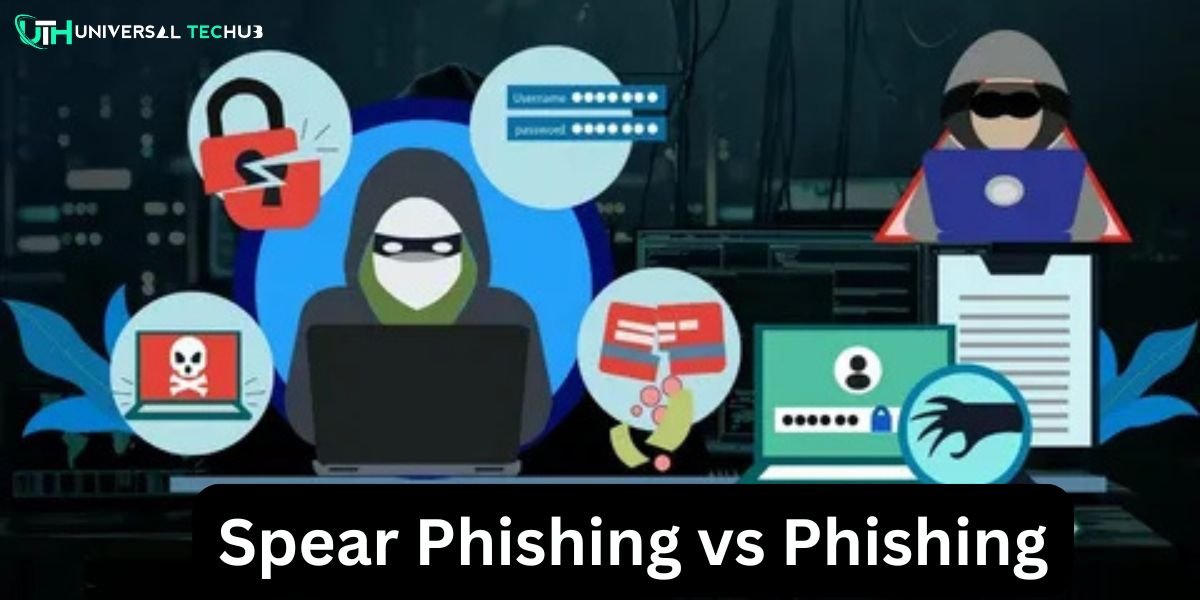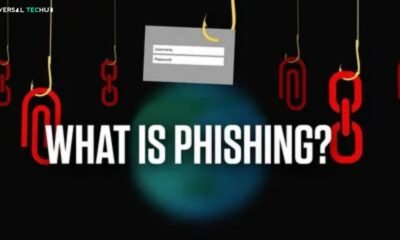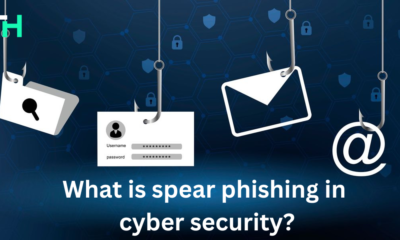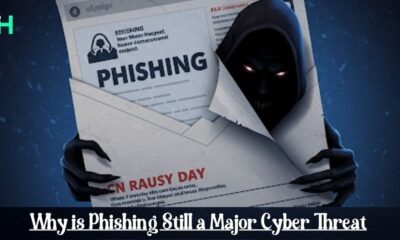Social engineering attack
Spear phishing vs phishing: Understand the Risks

Find out how to protect your company in 2024 by studying the distinctions between spear phishing vs phishing. How is spear phishing different from phishing? Internet users are familiar with the notion of phishing and spear phishing.
For years, scammers have found their way into inboxes, with some offering incredible earnings promises and others using deceptively phrased incentives. Business Email Compromise (BEC) is responsible for $50 billion in reported losses over the past nine years, according to the FBI.
The most common method of attack for hacker groups in 2019, according to similar research, was spear phishing. Social engineering attacks on computers include techniques such as spear phishing vs phishing. Social engineering can trick victims into disclosing sensitive facts such as passwords, SSNs, and bank account information.
Malware, including ransomware, may be spread through harmful links and downloads in both spear phishing and ordinary phishing campaigns. Nevertheless, firms face more immediate cyber danger from spear phishing attacks compared to normal phishing. What follows is an explanation of the main features of spear phishing vs phishing, which can help you avoid attacks and strengthen your email security.
What is spear phishing?
Modern forms of phishing include spear phishing emails, highlighting the differences in spear phishing vs phishing approaches. While traditional phishing aims to deceive large numbers of people, spear phishing focuses on a single victim or small group.
Scammers sometimes employ social engineering and fake emails in spear phishing, specifically targeting particular individuals within a company. They might pretend to be someone familiar to the target, such as a relative, coworker, or business contact.
Criminals frequently use social media to make their requests for personal information seem more legitimate, utilizing informal language, personal details, and the target’s name. They may also employ malware to steal personal data. Manipulating employees into divulging critical information or engaging in illegal activities, such as sending money to fake firms, is their main objective.
This type of con artist typically employs two techniques:
Whaling attacks: Presidents, C-suite executives, and other high-ranking employees are the target of “whaling attacks,” in which the attackers try to steal sensitive information or authorize a big wire transfer without realizing it.
CEO fraud: CEO fraud occurs when an attacker poses as a top authority figure, such as the CEO or another high-ranking colleague, to commit targeted assaults against lower-level employees. Following is an attempt to force the reader to act.
Categories of spear phishing
The targets or impersonators of spear phishing attacks determine the kinds of these attacks.
Corporate email compromise
Scammers use business email compromise (BEC) to try to steal sensitive information or money from businesses using spear phishing emails.
Cybercriminals, often part of organized cybercrime gangs, execute Business Email Compromise (BEC) attacks by sending fraudulent emails to employees of a targeted company. These emails are designed to appear as though they are from a trusted source, such as a boss, coworker, vendor, partner, client, or other familiar contact. The primary goal is to manipulate employees into paying fake invoices, transferring funds to fraudulent accounts, or sharing sensitive information under false pretenses.
In some cases, BEC attackers attempt to infect victims with malware or ransomware. They achieve this by persuading employees to open malicious attachments or click harmful links embedded in the emails.
Taking their schemes to a more advanced level, certain BEC fraudsters gain access to the actual email accounts of their targets by stealing or acquiring login credentials. Once inside, they send emails directly from the compromised accounts, making the scam appear even more credible than using a carefully forged sender address.
A prevalent variation of BEC attacks is CEO fraud. In this scenario, scammers impersonate high-ranking executives, such as a company’s CEO, to deceive lower-level employees. Believing they are acting on direct orders from their boss, these employees may unwittingly send money or reveal sensitive information.
Whale phishing
Whale phishing, a specific type of attack within the broader spear phishing vs phishing landscape, focuses on high-profile individuals such as members of the board of directors, C-suite executives, politicians, and celebrities.
These individuals are prime targets because they often have access to sensitive information, significant financial resources, or a reputation worth protecting. Consequently, whale phishing attempts are typically far more sophisticated and involve extensive research to increase the likelihood of success.
Related Blogs
How do spear phishing attacks differ from standard phishing attacks
Image of Spear Phishing Email with Victims Employerad Link Example
A spearphishing attack example
A complex spear phishing vs phishing attack breached the network of cloud-based communication behemoth Twilio in August 2022. Scammers impersonated Twilio’s IT department and sent phishing SMS messages to employees. These messages directed workers to a fake website, claiming that their passwords had expired or their schedules had changed, prompting them to re-enter their login credentials. The attackers made the scam more convincing by adding terms like “Twilio,” “Okta,” and “SSO” (Single Sign-On) into the fraudulent website’s URL, enticing employees to click on the malicious link.
By stealing login credentials from unsuspecting workers, the scammers were able to infiltrate Twilio’s corporate network. The scam stood out for two main reasons: its high level of sophistication and the prominence of Twilio as a business-to-business (B2B) provider to numerous tech companies, which made the attack a significant media story.
Other tech companies affected by the phishing fraud included Authy, Twilio’s two-factor authentication service, and Signal, an encrypted messaging app that used Twilio for SMS-based service verification. The attack impacted over 1,900 Signal accounts and affected 163 client organizations. This incident highlights the growing frequency of spear phishing attacks, such as the one experienced by Twilio.
Must See:
Spear Phishing Definition: Targeted Cyberattack Explained
Spear Phishing Examples: Protect Yourself
What is phishing?
The difference between spear phishing and regular phishing efforts is that the latter uses a more targeted approach to crimes.
However, this does not lessen the threat that traditional phishing emails pose.
While email is the most popular medium for phishing scams, ‘vishing’ and ‘smishing’ refer to more specific methods of contacting unsuspecting victims. In the comparison of spear phishing vs phishing, phishing is a high-powered game: out of many thousands of attempts, at least one will likely be successful.
On the other hand, regular fraudsters, in contrast to spear phishing, employ impersonal but urgent language to trick readers into downloading a harmful file, clicking on a risky link, or revealing sensitive information like login passwords or credit card numbers.
The following are just a few of the numerous ways phishing can occur:
“Vishing” refers to phishing attempts that use voice-over-Internet Protocol (VoIP) or other web protocols that are downloaded onto a user’s device.
Smishing, short for “phishing via text message,” is a kind of online scam. Similar to PCs, phones can also install malware.
Similar to spear phishing, business email compromise (BEC) involves the use of compromised or fake email accounts to attract potential victims.
Phishing attacks that target wire transfers to fake accounts are known as wire transfer phishing.
Difference between spear phishing vs phishing
Although there are many similarities between spear phishing vs phishing, the dangers they pose to your company are distinct, and the security precautions you should take to protect it are also different. Here’s a quick comparison between spear phishing vs phishing:
Attack technique
Spear Phishing: To better understand spear phishing, it’s helpful to picture an expert fisherman using a single line to target particular fish by carefully choosing the bait. The fisherman checks the lure’s effectiveness by researching the fish’s behavior, habitat, and preferences. This method is quite precise, making it more difficult for the fish to detect it as a trap and increasing the likelihood of a successful catch.
Phishing: As an alternative, conventional phishing involves releasing a huge net into the water, much like a big fishing trawler. Capturing a large number of fish is more important than worrying about their quality. The focus here is on quantity rather than quality.
Personalization
Spear Phishing: In spear phishing, cybercriminals research their victim’s social circle, hobbies, and routines in extensive detail. They make the deception even more believable by crafting individualized communications that seem real and pertinent to the receiver.
Phishing: This degree of customization is absent from typical phishing emails. When these emails are distributed to large groups of individuals, they typically lack customization. Words like “Your account has been compromised” or “You’ve won a prize” are typical in these types of communications and are easily identifiable by knowledgeable users.
Urgency
Spear phishing: The goal of these types of attacks is to gradually gain the recipient’s trust so that they become less wary and comfortable. In order to acquire the victim’s trust, the attacker may wait to ask for crucial information.
Phishing: Standard phishing emails often use the urgency strategy. For example, “Your account will be locked if you don’t respond within 24 hours.” or “Click here to update your password immediately.” provide the impression that quick action is necessary in the emails. This sense of urgency encourages victims to act swiftly and without hesitation.
Purpose
Spear Phishing: The aims of spear phishing are often more targeted and severe. Intruders may be aiming for sensitive corporate data, financial information, or even access to certain systems. Executives, CFOs, and anybody else with access to sensitive information are common targets.
Phishing: When it comes to phishing, the goals are more generalized and typically involve gathering various types of information from a large audience. Criminals may actively search for sensitive information, including login passwords, financial details, or personal details, which they could exploit for financial gain or to initiate additional attacks.
Prevention
Spear Phishing: Conventional security measures may have a harder time detecting spear phishing due to its targeted nature. Advanced threat detection systems, staff training, and stringent verification procedures for sensitive requests are all necessary for increasingly complex defensive methods.
Phishing: Most spam filters and elementary email security programs can detect standard phishing attempts. Even with these safeguards in place, it is crucial to educate and inform users so that they can recognize and avoid phishing attacks.
Identifying phishing attacks
You need to be aware to effectively deal with possible attacks. You can easily recognize phishing emails because they often originate from unknown senders, make unexpected requests, and contain impossible material. To detect cyber security risks, you must constantly follow these steps:
Ensure that the email is valid. Does it include any typos or strange language?
Is there anything unusual about the way you say or end a formal salutation?
Familiarity: The sender claims to know you, and they use a term you might be familiar with. Is this a sign of familiarity?
Time pressure: Do you feel rushed to respond to the email because it demands immediate action?
Look at the link: Does the link’s URL correspond to the one it claims to go to?
Resource: Pinterest
Several red flags should be considered when deciding if an email appears to be spear phishing or not. “How to spot a phishing email” is a blog article that goes into further detail on this topic.
Baiting Attacks Explained: A Closer Look at Cyber Threat Tactics
Tips to Avoid Spear Phishing and Phishing Scams
A single malicious action may infect a computer and put a whole enterprise at risk. You can defeat even the most intrusive attacks with the right knowledge and resources. To protect yourself from spear phishing vs phishing attempts of any type, here are some straightforward things you can do right now.
1: Secure your data
- If an attacker steals your device or data, data encryption will stop them from accessing or using it.
2. make use of MFA.
- If someone gains illegal access to your account, multi-factor authentication is a beneficial measure to take. Before accessing your data, an attacker must get authorization for each authentication channel. They will fail badly in the vast majority of instances.
3. Verify your email address.
- By following this best practice, you can prevent the main method of credential theft. Setting DomainKeys Identified Mail (DKIM), Sender Policy Framework (SPF), or DMARC are just a few of the ways you may authenticate your email.
4. Don’t ever open an attachment from an unknown sender.
- Locking yourself out of your device, stealing sensitive data, and deleting vital files are all possible outcomes of just one malicious link or attachment. It is crucial that you carefully review any emails that seem unusual or suspicious for these reasons.
- You should always verify the sender’s identity before opening an attachment in an email, even if you know who sent it.
5. Make sure the software is always up-to-date.
- Setting all programs and operating systems to automatically download will protect users from malware and phishing attempts.
6. Make use of robust passwords and change them frequently.
- In less than six hours, hackers can decipher 90% of all passwords. The vast majority of individuals put their personal and professional data in danger by using the same old passwords everywhere they go.
- Password managers and other strong password practices can help users avoid cybercrime.
7. Keep yourself updated and adhere to industry standards.
- Anyone can become a target of phishing attacks if they receive the right incentives. Regular security training and briefings can help sharpen cybersecurity knowledge. Staying updated with the latest recommendations is crucial, as phishing techniques are constantly evolving.
Conclusion
Both spear phishing and phishing are types of social engineering attacks used by hackers to trick individuals into revealing personal information or downloading malicious software. While traditional phishing attacks target a wide audience, spear phishing focuses on specific individuals or organizations. This more targeted approach, which often involves extensive research and customization, enhances the attack’s legitimacy, making it more effective—and potentially more damaging.
To safeguard against these cyber threats, both individuals and organizations must recognize the differences between spear phishing vs phishing attacks. Implementing strict security measures such as email filters, regular staff training, and multi-factor authentication can help minimize the impact of these attacks.
Read More
-

 Phishing attack5 months ago
Phishing attack5 months agoWhat is Spear Phishing and How You Can Identify This Scam?
-

 Social engineering attack7 months ago
Social engineering attack7 months agoBaiting Attacks Explained: A Closer Look at Cyber Threat Tactics
-

 Social engineering attack5 months ago
Social engineering attack5 months agoWhat are Social Engineering Attacks – A Complete Guide to Cyberattacks Prevention
-

 Social engineering attack7 months ago
Social engineering attack7 months agoSpear Phishing Attack: A Targeted Cyber Threat
-

 Social engineering attack7 months ago
Social engineering attack7 months agoWhat is spear phishing attack? A detailed guide
-

 Phishing attack5 months ago
Phishing attack5 months agoWhat Are Phishing Emails? A guide for you
-

 Social engineering attack7 months ago
Social engineering attack7 months agoWhat is spear phishing in cyber security?
-

 Phishing attack1 month ago
Phishing attack1 month agoWhy is Phishing Still a Major Cyber Threat? Everything You Need to Know




















